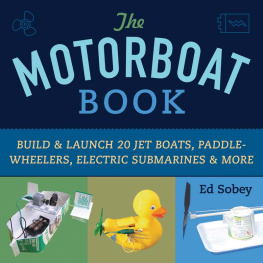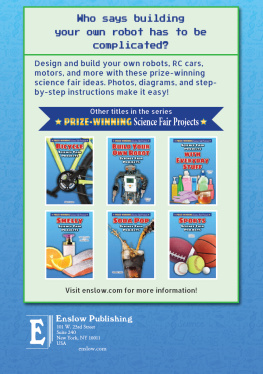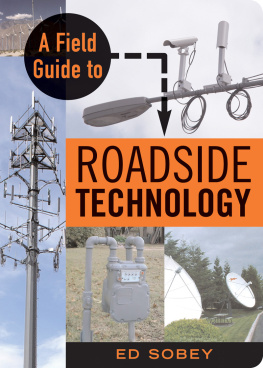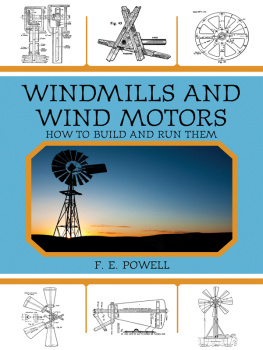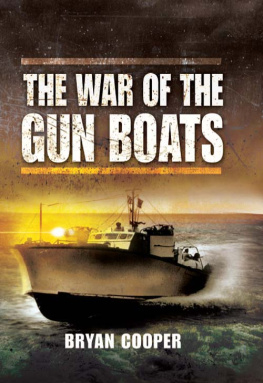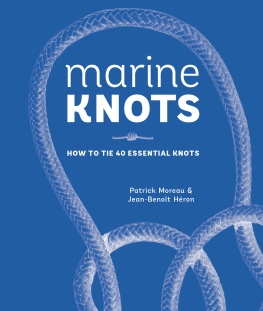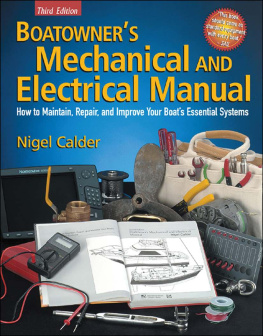
Copyright 2013 by Ed Sobey
All rights reserved
First edition
Published by Chicago Review Press, Incorporated
814 North Franklin Street
Chicago, Illinois 60610
ISBN 978-1-61374-447-5
Library of Congress Cataloging-in-Publication Data
Sobey, Edwin J. C., 1948
The motorboat book : build & launch 20 jet boats, paddle-wheelers, electric submarines & more / Ed Sobey. First edition.
pages cm
Includes bibliographical references.
ISBN 978-1-61374-447-5
1. Ship modelsJuvenile literature. 2. MotorboatsJuvenile literature. 3. HandicraftJuvenile literature. I. Title.
VM298.S63 2013
623.8201044dc23
2012046326
Cover design: Andrew Brozyna, AJB Design, Inc.
Interior design: Rattray Design
Printed in the United States of America
5 4 3 2 1
To Aunt Kay
Contents
Acknowledgments
J ohn Weigant suggested the baking soda model that he remembered from his youth. He related that he spent lots of time in his bathtub as a kid using up his mothers vinegar. John also helped with several experimental models. As always, John, thanks for your ideas.
Professor Alejandro Jenkins at Florida State University provided copies of his research papers on the subject of putt-putt boats. His work is shedding new light on the operation of these enigmatic and fun boats. Thank you, professor.
Thanks too to my wife, Barbara, for her suggestions on several projects and for not complaining about our house being cluttered with models, miscellaneous parts, and failed experiments.
Lastly, thanks go to the kids and teachers who applied their creativity and critical thinking skills to build some of the models shown here.

Ahoy!
M essing around with boats is great fun and a wonderful way to learn. By making a model watercraft that really works, you can test your engineering talents and learn patienceand a wide variety of skills.
You will learn science and technology while enjoying the process of building and testing the boats, pumps, and other devices shown in this book. You will also learn the same way that inventors, scientists, and artists learn: by having creative ideas, making models of the ideas, and figuring out how to make the models work. It is the natural way to learnand the way that best engages people in the process of learning.
If you are a teacher or home school parent, you will find an incredible amount of solid, STEM (science, technology, engineering, and mathematics) content and methods wrapped in the feathers of The Motorboat Book. Grab a copy of the STEM standards for your state or country and compare them to the list below. Building these projects leads to understanding of:
- Buoyancy and density
- Chemical reaction
- Design and systems
- Electric circuits
- Energy and energy transformations
- Forces and motion
- Gravity
- Hydraulics
- Investigations and experiments
- Measurement
- Motors
- Nature of matter
- Process of science and engineering investigations
- Solar energy
- Sound
- Use of tools and materials
You have to admit that this is an impressive list of learning topics. It is especially impressive when you consider that anyone making these models will be excited to continue the learning and wont ask, Is this on the test? As readers build models, they will develop skills in using tools and materials and will improve their self-confidence. Once skills and understanding have been achieved, people tend to use them. Builders will continue making things using the skills gained and learn new skills along the way.

Appendix B will tell you how to make connections between the science standards and the projects described in this book.
Ships Log
As founding director of the National Inventors Hall of Fame, I have met many great living inventors. Individually and in groups, they repeatedly expressed the importance of having the opportunity to mess around in a shop or laboratory early in their careers. These unstructured experiences gave them the skills and self-confidence to be successful later. Messing around with motorboat projects is a great way to launch children into creative pursuits.
If you are less interested in the learning value and more interested in messing around with boat models, you will still have a blast. I provide the directions but allow you all the latitude you need to build each project your own way. While building you will come up with dozens of new ideas to improve or personalize the models.
Thats what I want. My goal is to encourage you to try new technologies, build new designs, and expand on what I suggest. I wish you fair winds and following seas, and many happy hours messing around with The Motorboat Book.

Start with an Ocean
I f you are going to make these models you will need a place to test them and show them off. You need an ocean!
If you have a swimming pool or pond available, you can use either, provided you first give it a suitable name. Since Atlantic, Pacific, and Indian are already taken, come up with a new name for your ocean.
Safety
When you create or use any open body of water, take care that people, especially young children, cannot get into them unsupervised. Even a few inches of water is a hazard for a small child.
If a body aquatic isnt available, build your own. Here are several size options.
Large Oceans
How big would you like to make your ocean? The limitations are the size of level ground you have and the depth of the ocean you need.
For most purposes I find that a good size for an outdoor ocean is 4 feet by 8 feet. Conveniently, hardware stores sell waterproof tarps and sheets of plastic large enough for an ocean of this size. They also carry larger-size materials, or you can duct tape several tarps together if you really need to.
A shallow ocean requires less support and is a safer option than a deeper ocean. As water depth increases, the pressure pushing your ocean apart will increase and require stronger construction. An ocean with a depth of 4 to 6 inches works well, but you may need more water if your models hit bottom.
Adult supervision required
Materials
4 folding tables or similar flat surfaces
Waterproof tarp with grommets, at least 6 feet by 10 feet (larger would be better)
Nylon string
Hose and water supply
3 wooden boards, 1 inch by 8 inches and 8 feet long (optional)
Adult helper (for optional steps)
Saw (optional)
4 hinges with removable pins or other connectors (optional)
Grid wall, 2 feet by 8 feet (optional)
Plastic cable ties (optional)
Build It
1. Any four vertical surfaces that wont move will support your ocean. For a shallow ocean, four folding tables work well. Lay the tables on edge in a square or rectangle, with the legs extended to hold them up.

